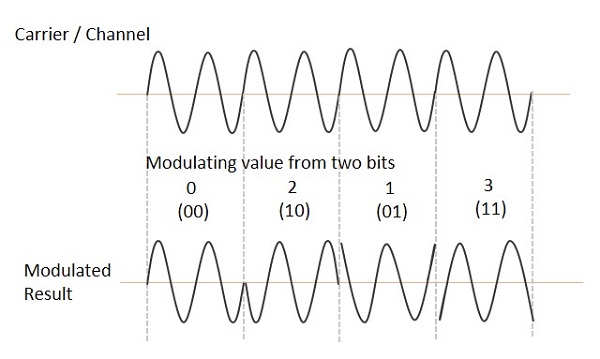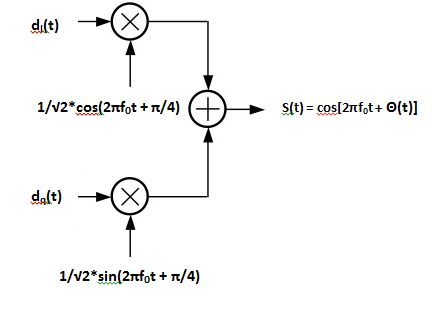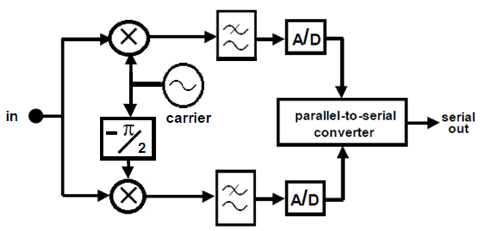LTE, Long Term Evolution, the successor to UMTS and HSPA is now being deployed and is the way forwards for high speed cellular services
LTE has introduced a number of new technologies when compared to the previous cellular systems. They enable LTE to be able to operate more efficiently and also to provide the much higher data rates that are being required.
It uses different form of radio interfaces using OFDMA /SC-FDMA instead of CDMA.
Then the u may ask the question what is this OFDMA /SC-FDMA , how this is much efficient then CDMA?
Orthogonal Frequency Division Multiplexing or OFDM is a form of digital multi-carrier multicarrier modulation scheme using multiple subcarriers within the same single channel.OFDM makes use of a large number of closely spaced orthogonal subcarriers that are transmitted in parallel.
OFDM makes use of a large number of closely spaced orthogonal subcarriers that are transmitted in parallel.

Each subcarrier is modulated with a conventional digital modulation scheme (such as QPSK, 16QAM, etc.) at low symbol rate.
ADVANTAGES:
1] Robustness to multipath fading and interference
QPSK(QUADRATURE PHASE SHIFT KEYING):
This technique is also known as quaternary PSK, quadriphase PSK or 4-PSK. QPSK refers to a type of phase modulation technique where there are four states involved.
It uses four points on the constellation diagram, equispaced around a circle. Since QPSK has four phases, it can encode two bits per symbol, thereby increasing the data rate.
In QPSK the original data stream dk(t) = d0 , d1 , d2 ,… is divided into an in-phase stream, dI(t), and a quadrature stream, dq(t).

QPSK MODULATOR

QPSK DEMODULATOR

A slight modification to this basic QPSK technique gives various other forms of modulation techniques such as DQPSK, OQPSK, π/4 QPSK etc.
These techniques are more efficient in different scenarios when compared to basic QPSK.
16QAM:
Quadrature Amplitude Modulation:
This modulation technique is a combination of both Amplitude and phase modulation techniques
QAM is better than QPSK in terms of data carrying capacity. QAM takes benefit from the concept that two signal frequencies.
one shifted by 90 degree with respect to the other can be transmitted on the same carrier.
For QAM, each carrier is ASK/PSK modulated. Hence data symbols have different amplitudes and phases.
In 16-QAM each symbol represents 4 bits as mentioned in the constellation diagram .
For example if the input is 1010 then the output is (-3-j*3)*KMOD.
Typically KMOD is 1/root (10) for 16-QAM.

Difference between 16QAM, 64QAM, 256QAM:
LTE has introduced a number of new technologies when compared to the previous cellular systems. They enable LTE to be able to operate more efficiently and also to provide the much higher data rates that are being required.
It uses different form of radio interfaces using OFDMA /SC-FDMA instead of CDMA.
Then the u may ask the question what is this OFDMA /SC-FDMA , how this is much efficient then CDMA?
Orthogonal Frequency Division Multiplexing or OFDM is a form of digital multi-carrier multicarrier modulation scheme using multiple subcarriers within the same single channel.OFDM makes use of a large number of closely spaced orthogonal subcarriers that are transmitted in parallel.
OFDM makes use of a large number of closely spaced orthogonal subcarriers that are transmitted in parallel.

Each subcarrier is modulated with a conventional digital modulation scheme (such as QPSK, 16QAM, etc.) at low symbol rate.
The main difference between an OFDM and an OFDMA (Orthogonal Frequency Division Multiple Access)
is in the OFDM the user are allocated on the time domain. In the OFDMA user are allocated on the both time and frequency domain.
ADVANTAGES:
1] Robustness to multipath fading and interference
2] It lends itself to digital signal processing techniques.
QPSK(QUADRATURE PHASE SHIFT KEYING):
This technique is also known as quaternary PSK, quadriphase PSK or 4-PSK. QPSK refers to a type of phase modulation technique where there are four states involved.
It uses four points on the constellation diagram, equispaced around a circle. Since QPSK has four phases, it can encode two bits per symbol, thereby increasing the data rate.
In QPSK the original data stream dk(t) = d0 , d1 , d2 ,… is divided into an in-phase stream, dI(t), and a quadrature stream, dq(t).
dI(t) = d0 , d2 , d4, …
dq(t) = d1, d3, d5, …
dq(t) = d1, d3, d5, …
dI(t) and dq(t) each have half the bit rate of dk(t). A convenient orthogonal realization of a QPSK waveform, S(t), is achieved by amplitude modulating the in-phase and quadrature data streams onto the cosine and sine functions of a carrier wave as follows.
S(t) = 1/√2 * dI(t) cos(2πf0t + π/4) + 1/√2 * dq(t) sin(2πf0t + π/4) :(1)
Using trigonometric identities, this equation can also be written as
S(t) = cos[ 2πf0t + Θ(t) ]
The value of Θ(t) will correspond to one of the four possible combinations of dI(t) and dq(t) in the equation (1).
Θ(t) = 0o , ± 90o , or 180o.

QPSK MODULATOR

QPSK DEMODULATOR

A slight modification to this basic QPSK technique gives various other forms of modulation techniques such as DQPSK, OQPSK, π/4 QPSK etc.
These techniques are more efficient in different scenarios when compared to basic QPSK.
16QAM:
Quadrature Amplitude Modulation:
This modulation technique is a combination of both Amplitude and phase modulation techniques
QAM is better than QPSK in terms of data carrying capacity. QAM takes benefit from the concept that two signal frequencies.
one shifted by 90 degree with respect to the other can be transmitted on the same carrier.
For QAM, each carrier is ASK/PSK modulated. Hence data symbols have different amplitudes and phases.
In 16-QAM each symbol represents 4 bits as mentioned in the constellation diagram .
For example if the input is 1010 then the output is (-3-j*3)*KMOD.
Typically KMOD is 1/root (10) for 16-QAM.

Difference between 16QAM, 64QAM, 256QAM:
Specifications
|
16-QAM
|
64-QAM
|
256-QAM
|
its per symbol
|
4
|
6
|
8
|
Symbol rate
|
(1/4) of bit rate
|
(1/6) of bit rate
|
(1/8) of bit rate
|
KMOD
|
1/SQRT(10)
|
1/SQRT(42)
|
1/SQRT(170)
|

0 comments: